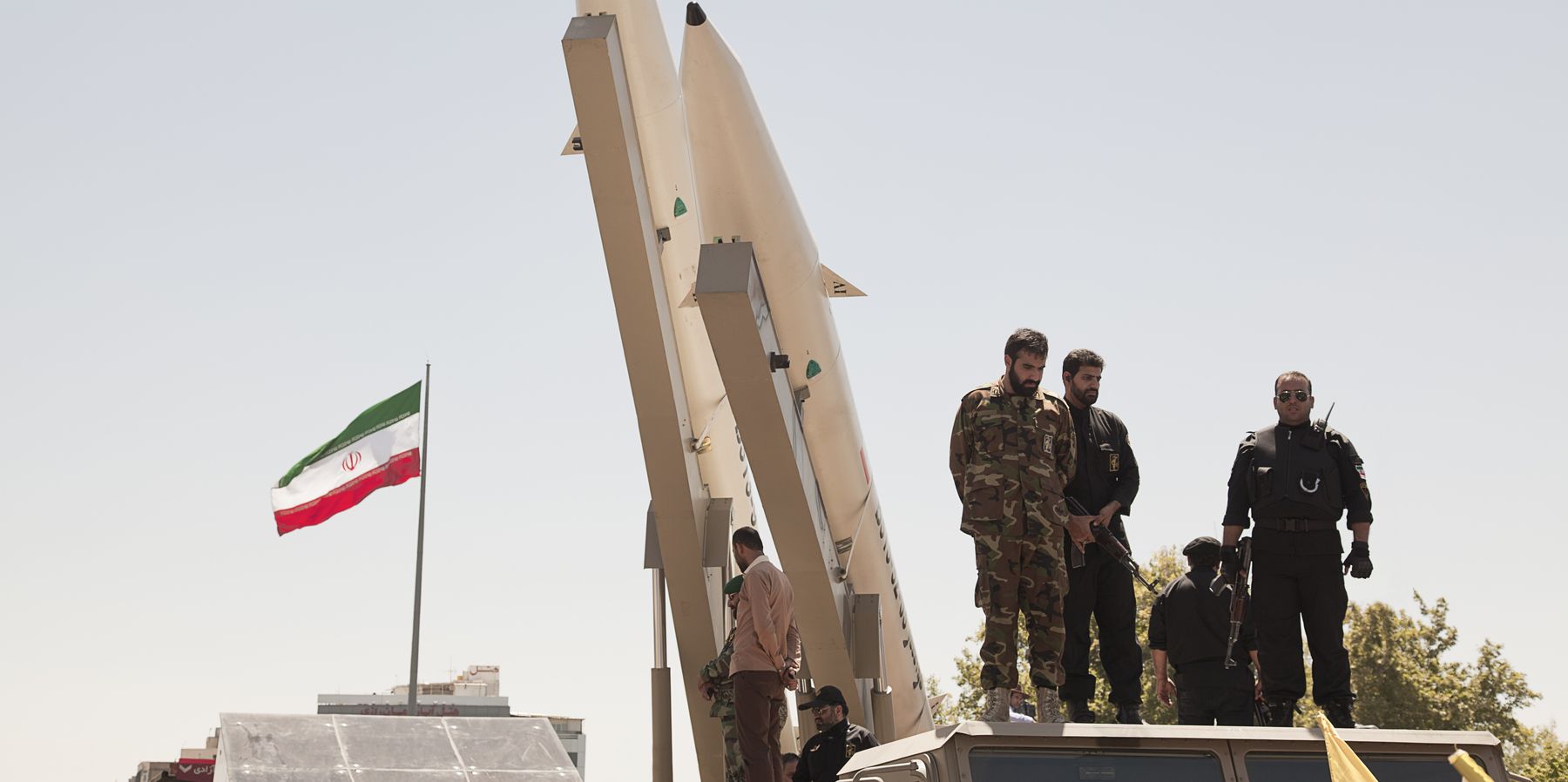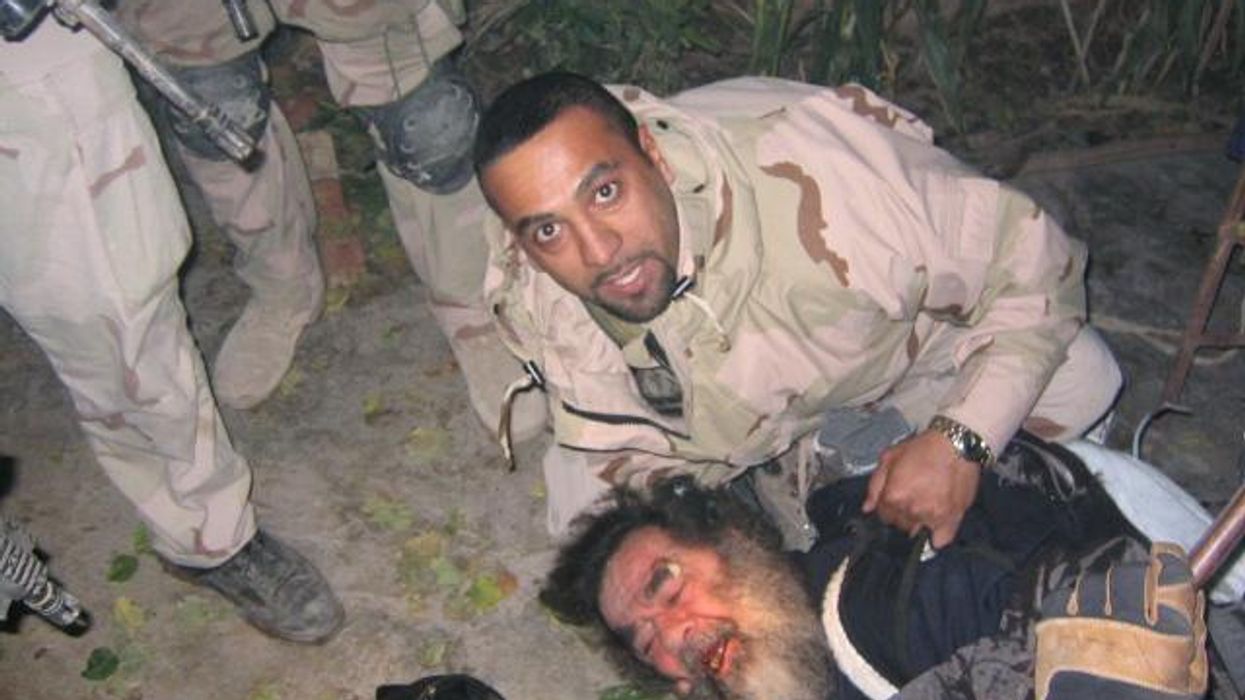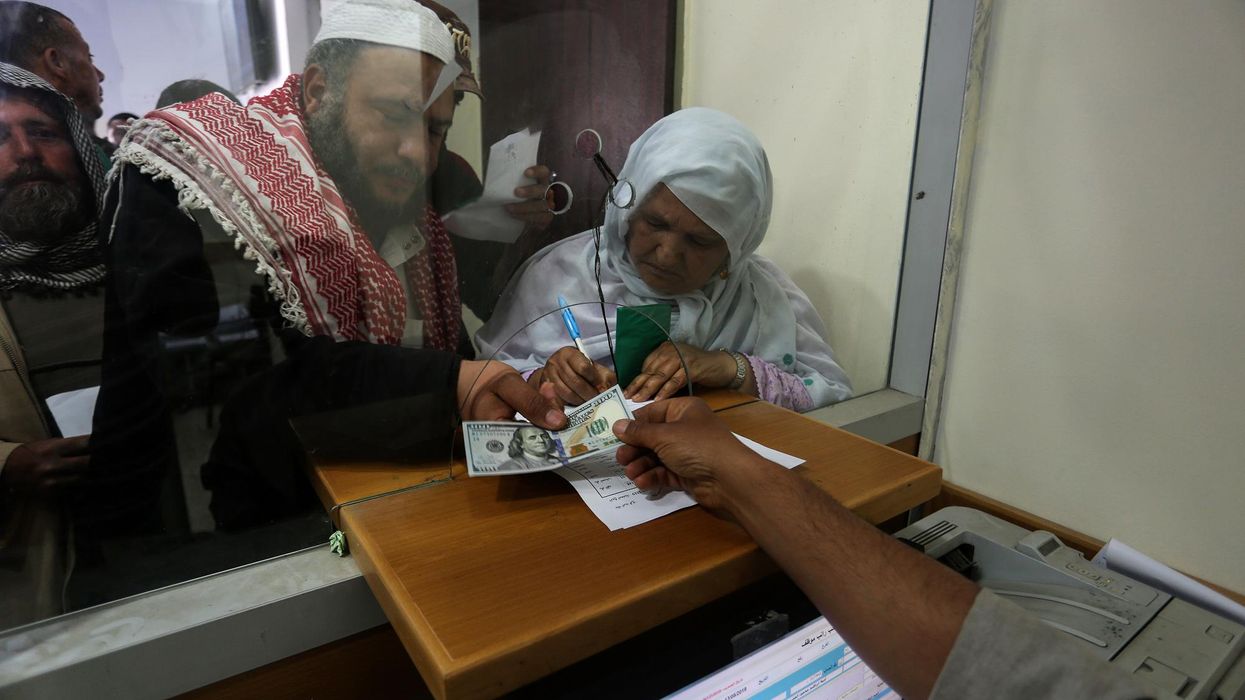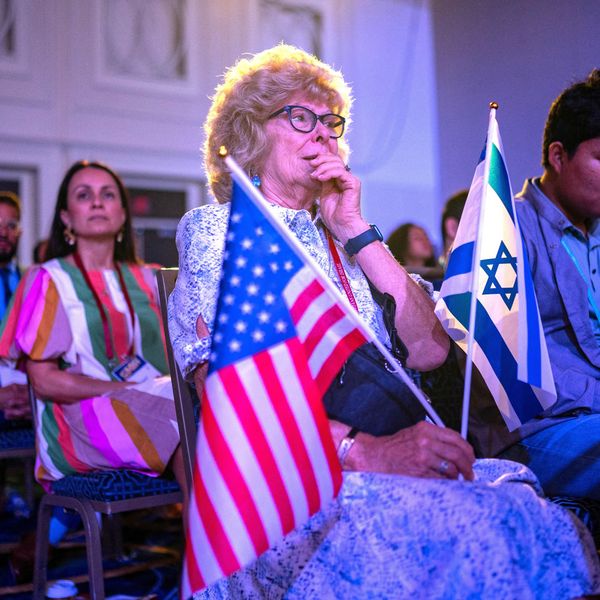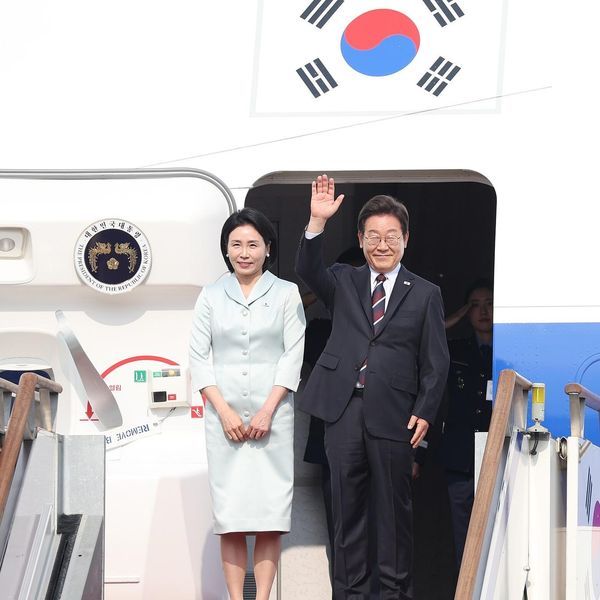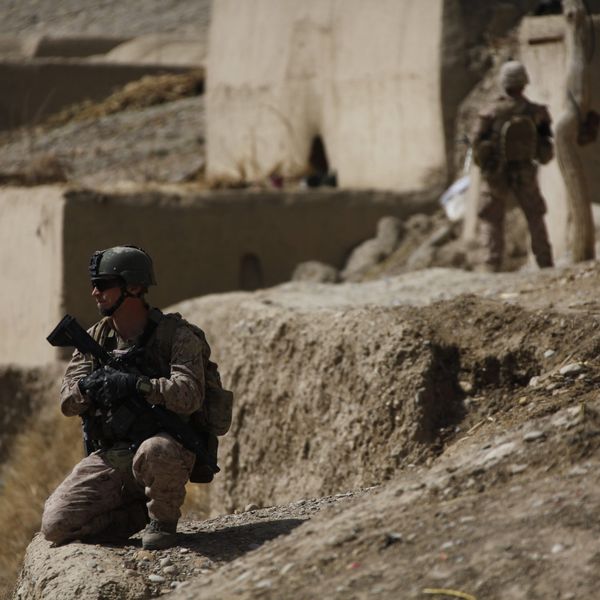On Saturday, an alleged Israeli airstrike killed five senior members of Iran's Revolutionary Guard Corps in Damascus. On the same day, an Iraqi Shi’a militia affiliated with Iran launched a salvo of ballistic missiles at Al-Asad base in Iraq, housing U.S. forces, resulting in injuries to U.S. personnel. Normally Iraqi militias use drones or rockets, not the ballistic missiles preferred by the Islamic Republic.
These attacks occur at an inflection point for Iran.
From Jan. 15 to Jan. 16, the Islamic Republic of Iran conducted military strikes in Iraq, Syria, and Pakistan, primarily in retaliation for an attack within its borders on Jan. 3. The Islamic State of Iraq and Syria (ISIS), and its branch in Afghanistan, claimed responsibility for the inciting explosions, which killed close to 90 people in Kerman, Iran, in one of the deadliest terrorist strikes in the Islamic Republic since 1979.
Iran’s Supreme Leader, Ayatollah Ali Khamenei, vowed the “terrorist attack” would be met with a “harsh response.” Yet Iran targeted alleged bases of Kurdish and Baluch separatists in Iraq and Pakistan, respectively, and ISIS remnants in Syria, not Afghanistan. This demonstrates that Tehran feels emboldened to strike any group it deems a threat, using the Jan. 3 attack as a cover. Iran previously showed more restraint responding to domestic terror attacks from 2017 to 2020.
An analysis of the string of events that led to Iran’s recent retaliation demonstrates that a regional war is erupting in the Middle East after the Oct. 7, 2023, Hamas attacks, even beyond the recent U.S. and UK strikes in Yemen. While the U.S. has yet to acknowledge this fact, the history of terrorist attacks within Iran demonstrates why it believes the fighting is linked to other events and sheds light on how Tehran will lash out.
When terrorist attacks occur in Iran, they rarely generate media coverage, showing an unfortunate indifference to Iranian lives. However, Iran too wages its own war on terrorism. An examination of past attacks and how Iran responded demonstrates that the Islamic Republic’s “harsh response” — its own counter-terrorism strategy — is an attempt to establish deterrence, as the U.S. and Israel seek to do the same in the region.
The spiral of violence in January 2024
On Dec. 25, 2023, an Israeli strike killed Iranian general Seyed Razi Mousavi in Damascus. At the same time, the U.S. targeted the Iraqi militia Kataib Hizballah, which cooperates with the Islamic Republic, in retaliation for allegedly launching drones at U.S. forces in Erbil.
On Jan. 1, 2024, the U.S. sunk three attacking speedboats in the Red Sea, killing 10 Houthis. On Jan. 2, an Israeli drone strike killed Hamas’s deputy leader Saleh al-Arouri in Beirut. On Jan. 3, the ISIS attack in Iran occurred. On Jan. 4, the U.S. assassinated “Abu Taqwa,” a mid-level leader of the Iraqi militia Harakat al-Nujaba in a drone strike in Baghdad, for his role in attacks on American targets in the region, allegedly at the behest of the Islamic Republic. Then the U.S. and UK launched air strikes on Jan. 11 and 17th on Houthi targets all over Yemen, a militia allied with Iran, followed three days later with the Israeli attack in Damascus.
The Islamic Republic will see the timing of these attacks as intrinsically linked.
The ISIS terrorist attacks occurred near the tomb of General Qassem Soleimani, in his hometown, targeting mourners who had congregated there for the fourth anniversary of his assassination. Soleimani, who headed the Iranian Islamic Revolutionary Guard Corps’ (IRGC) Quds Force, was killed in the early hours of Jan. 3, 2020, by a U.S. drone strike.
There had been speculation about the various actors who may have conducted the attack. From the Islamic Republic’s perspective, its enemies are ISIS and its branch in Afghanistan; Arab, Kurdish, and Baluchi separatists; the Iranian exile Mojahedin-e Khalq (MeK) Organization; as well as Israel and/or the U.S. Iran might very well blame all of those actors for working in unison.
The attack in Kerman bore the hallmarks of an ISIS operation and was claimed by the terrorist group. Ethnic separatists usually chose Iranian military targets. Israel tends to conduct targeted assassinations of Iranian scientists, or recently an Iranian general in Syria. But Islamic State’s attacks are indiscriminate, and Soleimani did organize the Iraqi militias to combat the terrorist group in Iraq, giving ISIS a reason to retaliate.
Between exiles, ethnic rebellions, and ISIS
After 1979, the nascent Islamic Republic had to deal with two problems in its western Kurdistan Province, which has a significant Kurdish population, and its southern Khuzestan province, which has a significant Arab population. Both areas proved problematic as the Iranian state sought to overcome ethnic differences between Persian nationalism and Kurdish and Arab aspirations by reconciling them under the banner of an Islamic Republic.
There were a few bouts of violence in the early 1980s, particularly with the Kurdistan Democratic Party of Iran (KDP-I), but the provinces remained quiet until 2003, when the Bush administration was allegedly responsible for stoking Iranian ethnic rebellions during its War on Terror. An ethnic Sunni Baluch rebellion erupted in addition to dissent in Kurdistan, Khuzestan, and among Iran’s ethnic Azerbaijani population, which is larger than the population of the republic of Azerbaijan itself.
Al-Qaida never struck in Iran, but ISIS, with its virulent anti-Shi’i ideology, attacked the majority Shi’a nation. In June 2017, four ISIS terrorists launched a brazen assault on Iran’s parliament, killing 18.
Iran’s ballistic counter-terrorism strategy
In retaliation, on 18 June, 2017, the IRGC launched six domestically-produced Zolfaghar ballistic missiles, with a range of over 400 miles, against Islamic State targets in Syria’s eastern province of Deir Ezzor.
While the target may have been ISIS, the strike sent a signal to Riyadh in the aftermath of Crown Prince Mohammed bin Salman’s statement that Saudi Arabia would take its “battle” with the Islamic Republic inside of Iranian territory, made at the height of the Saudi-Iranian cold war in the Middle East. The missiles, after all, also had the range to strike Riyadh.
The IRGC again launched missiles in early September 2018 against the KDP-I, exiled in bases in Iraq, in retaliation for their alleged attacks on Iranian military forces. In the most recent attack in January, the IRGC launched a dozen ballistic missiles and suicide drones at targets in northern Iraq, claiming it targeted a Mossad base there that was used to organize the Jan. 3 Kerman bombings, killing at least four people. In reality, Iran most likely sought to deter the KDP-I from future attacks.
Back in 2018, ISIS attacked an Iranian military parade on Sept. 22 in Ahvaz (“Ahwaz” in Arabic). The al-Ahwaz National Resistance, an umbrella movement for Arab separatist groups, also claimed responsibility for that attack. However, the Ahvaz group had never conducted such a brazen attack before, preferring to sabotage Iran’s pipeline facilities, usually at night. ISIS, on the other hand, had attacked Iran’s parliament in 2017 in broad daylight.
Furthermore, for reasons of domestic consumption, it was more convenient that ISIS was the culprit for the 2018 Ahvaz attack. If Tehran were to blame the Ahvaz group, it would serve as an admission of the government’s failure to address the depressed conditions in the Khuzestan province as well as in Kurdistan and Baluchistan — conditions that have led to grievances and pushed some locals to adopt terrorism. Second, the Ahvaz group did not have any military bases outside of Iran to retaliate against.
Iran retaliated with ballistic missiles to strike the ISIS-held town of Hajin in eastern Syria. When it lost all of its territory in the east of Syria, ISIS allegedly kept some networks alive in the rebel-held Idlib. Even though the Jan. 3 attack was claimed by the Islamic State-Khorasan Province (ISKP) the IRGC justified attacking Syria instead of Afghanistan by claiming that ISKP terrorists receive training in Idlib from ISIS and are then transferred to Afghanistan by the U.S. In reality, an attack on Afghan soil would have disrupted already tense relations with the Taliban in Afghanistan.
In the restive Sistan-Baluchestan province, bordering Pakistan, Iranian military forces were targeted twice in domestic terrorist attacks in 2019. The first hit a base of the Basij, the paramilitary force affiliated with the Revolutionary Guards, coinciding with the Islamic Republic’s celebration of the 40th anniversary of the revolution that brought down the shah.
Another attack followed, killing 20 Revolutionary Guards in a suicide bomb operation. Both were claimed by the Jaish al-Adl (Army of Justice), formed in 2012 to fight on behalf of Baluchi Sunnis, who complained of discrimination by the Shi’a government. The Islamic Republic did not respond to those attacks since this Baluch group operates clandestinely within the Sistan-Baluchistan province and out of the Baluchistan province in Pakistan. At that point, Iran did not want to violate the sovereignty of its neighbor. However, last week it did retaliate for a different set of attacks in mid-December, when the Baluch group attacked an Iranian police station in the town of Rask, killing at least 11 officers.
The year 2020 witnessed two major losses for Iran. After Soleimani’s death in January 2020, Iran launched 22 Fateh ballistic missiles at two Iraqi bases housing American forces. In December 2020, Iranian nuclear scientist Mohsen Fakhrizadeh was assassinated in his car by a sophisticated machine gun contraption controlled remotely. Israel and its alleged ally the MeK rarely take credit for the string of assassinations that have targeted Iran’s nuclear scientists, with Iran issuing condemnations, but little more. The fact that Iranian allies in Lebanon, the Palestinian territories, Syria, and Yemen have struck Israel or its interests since Oct. 7 serves as an indirect retaliation in their regional conflict.
The Islamic Republic has sought to mollify domestic audiences by demonstrating that it retaliated for recent attacks on Iranian soil and will consider its mission accomplished. Further retaliation would jeopardize its gains. Iran has already won a regional conflict by reviving its Hamas-Hezbollah-Houthi “Axis of Resistance” since October. Yet the people of Iran endured a loss.
Nevertheless, the recent events have demonstrated the interconnected and interdependent nature of the Middle East, and how a set of attacks in Iran are related to the ongoing tensions in the Eastern Mediterranean and Red Sea.
- Will US troops be drawn into the Israel-Gaza war? ›
- Did Israel kill Iranian commander to provoke a wider war? ›
- What ISIS threat? Washington says there is none. | Responsible Statecraft ›
- MEK’s shadow in European Parliament | Responsible Statecraft ›

